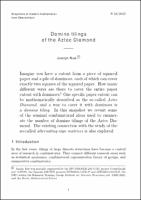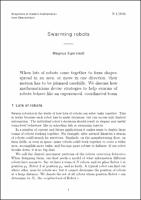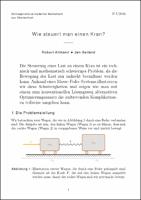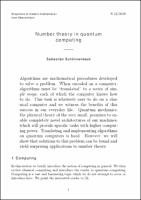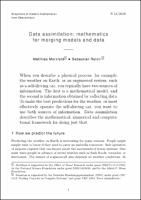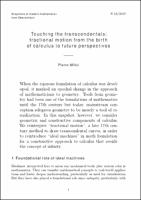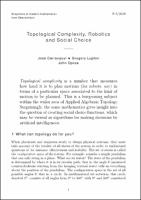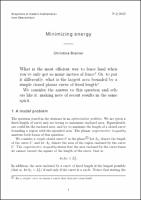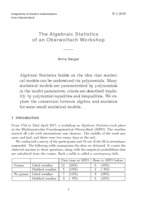Search
Now showing items 11-20 of 157
Towards a Mathematical Theory of Turbulence in Fluids
[SNAP-2016-015-EN] (Mathematisches Forschungsinstitut Oberwolfach, 2016)
Fluid mechanics is the theory of how liquids and gases move around. For the most part, the basic physics are well understood and the mathematical models look relatively simple. Despite this, fluids display a dazzling mystery ...
Domino tilings of the Aztec diamond
[SNAP-2015-016-EN] (Mathematisches Forschungsinstitut Oberwolfach, 2015)
Imagine you have a cutout from a piece of squared paper and a pile of dominoes, each of which can cover exactly two squares of the squared paper. How many different ways are there to cover the entire paper cutout with ...
Swarming robots
[SNAP-2016-001-EN] (Mathematisches Forschungsinstitut Oberwolfach, 2016)
When lots of robots come together to form shapes, spread in an area, or move in one direction, their motion has to be planned carefully. We discuss how mathematicians devise strategies to help swarms of robots behave like ...
Wie steuert man einen Kran?
[SNAP-2016-007-DE] (Mathematisches Forschungsinstitut Oberwolfach, 2016)
Die Steuerung einer Last an einem Kran ist ein technisch und mathematisch schwieriges Problem, da die Bewegung der Last nur indirekt beeinflusst werden kann. Anhand eines Masse-Feder-Systems illustrieren wir diese ...
Number theory in quantum computing
[SNAP-2018-012-EN] (Mathematisches Forschungsinstitut Oberwolfach, 2018-08-07)
Algorithms are mathematical procedures developed
to solve a problem. When encoded on a computer,
algorithms must be "translated" to a series of simple
steps, each of which the computer knows how
to do. This task is ...
Data assimilation: mathematics for merging models and data
[SNAP-2018-011-EN] (Mathematisches Forschungsinstitut Oberwolfach, 2018-07-10)
When you describe a physical process, for example,
the weather on Earth, or an engineered system, such
as a self-driving car, you typically have two sources of
information. The first is a mathematical model, and
the ...
Touching the transcendentals: tractional motion from the bir th of calculus to future perspectives
[SNAP-2019-013-EN] (Mathematisches Forschungsinstitut Oberwolfach, 2019-11-21)
When the rigorous foundation of calculus was developed,
it marked an epochal change in the approach
of mathematicians to geometry. Tools from geometry
had been one of the foundations of mathematics
until the 17th century ...
Topological Complexity, Robotics and Social Choice
[SNAP-2018-005-EN] (Mathematisches Forschungsinstitut Oberwolfach, 2018-08-10)
Topological complexity is a number that measures
how hard it is to plan motions (for robots, say) in
terms of a particular space associated to the kind of
motion to be planned. This is a burgeoning subject
within the ...
Minimizing energy
[SNAP-2015-002-EN] (Mathematisches Forschungsinstitut Oberwolfach, 2015)
What is the most efficient way to fence land when you’ve only got so many metres of fence? Or, to put it differently, what is the largest area bounded by a simple closed planar curve of fixed length? We consider the answer ...
The Algebraic Statistics of an Oberwolfach Workshop
[SNAP-2018-001-EN] (Mathematisches Forschungsinstitut Oberwolfach, 2018-02-27)
Algebraic Statistics builds on the idea that statistical
models can be understood via polynomials. Many
statistical models are parameterized by polynomials
in the model parameters; others are described implicitly
by ...


